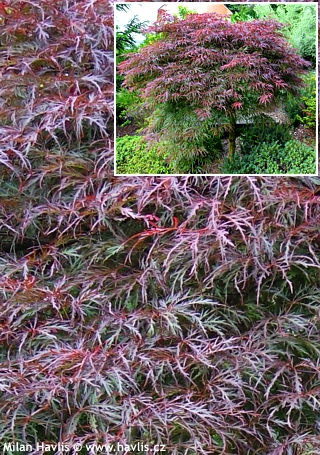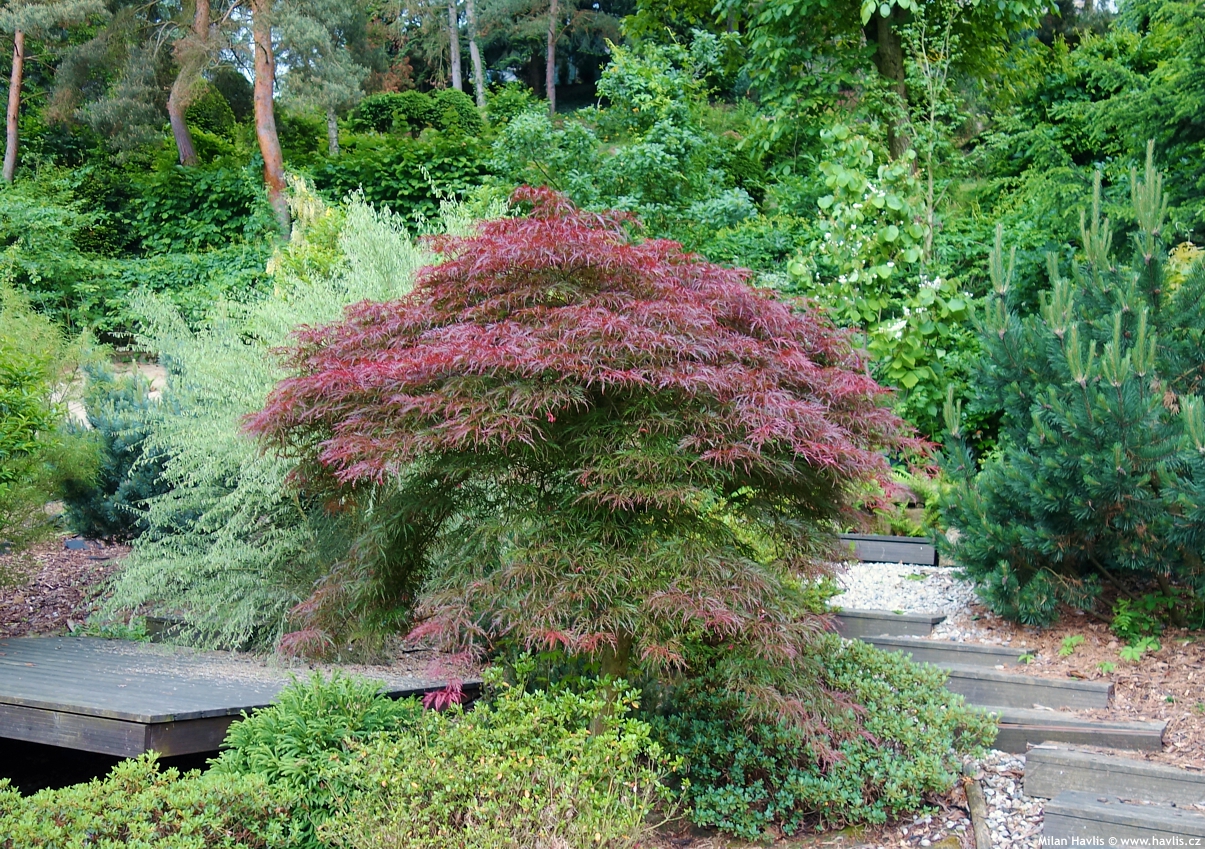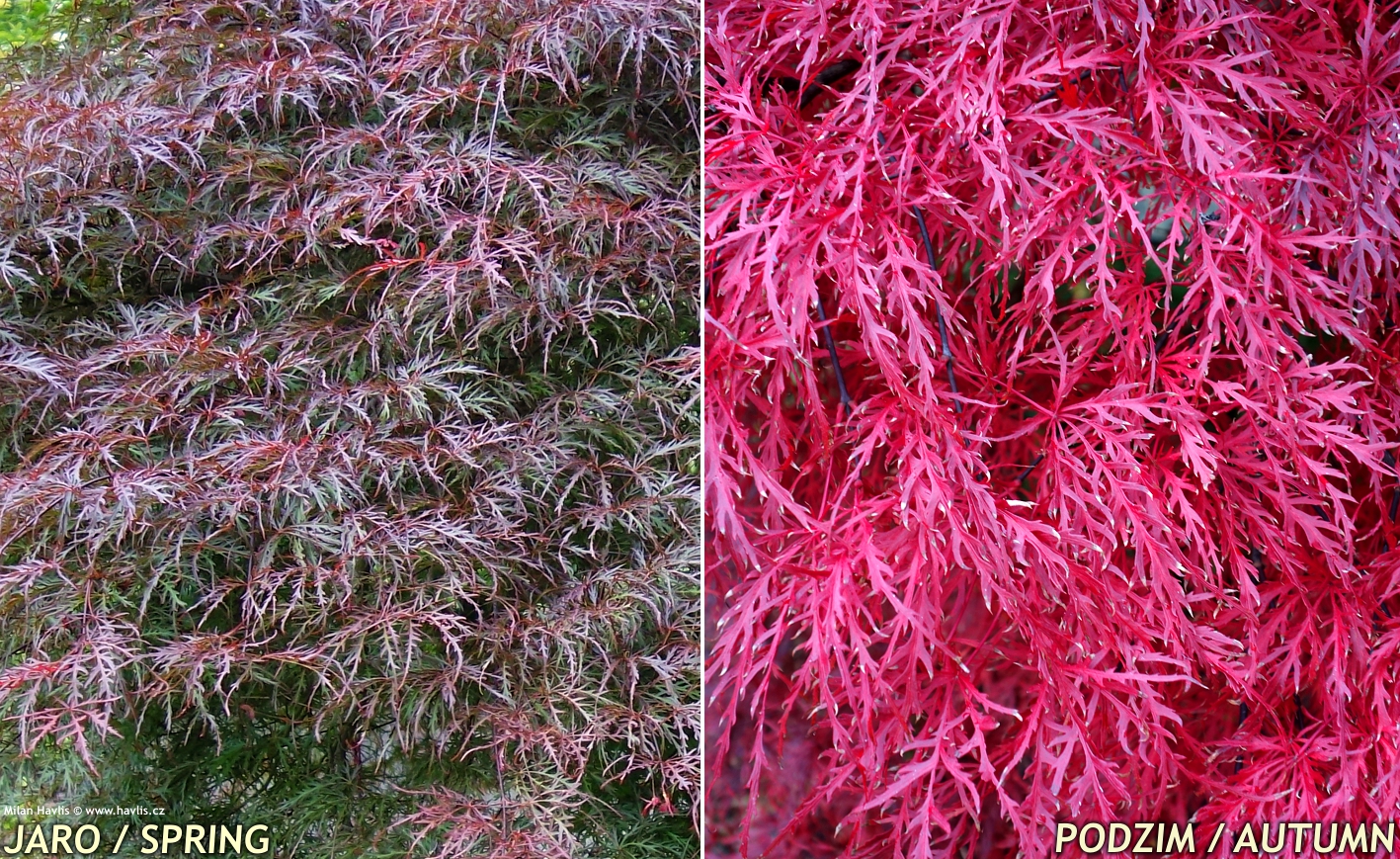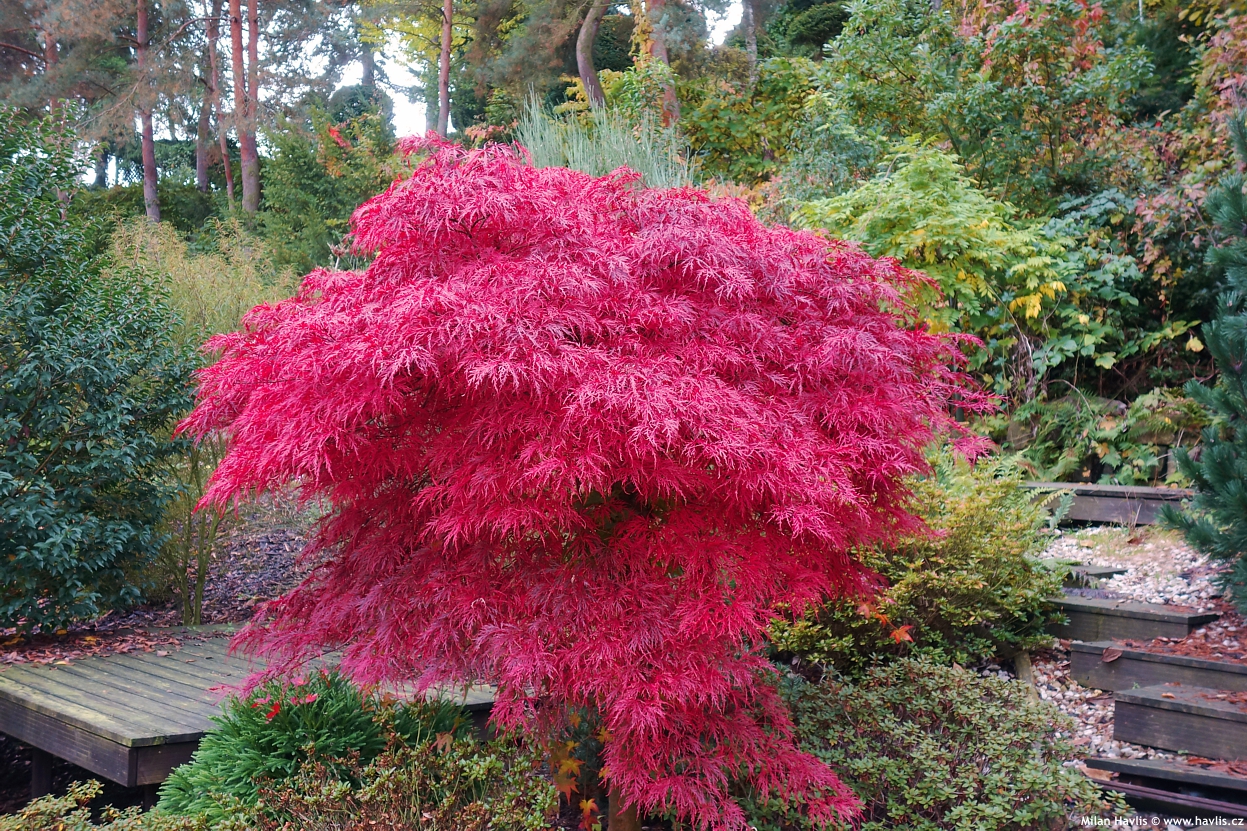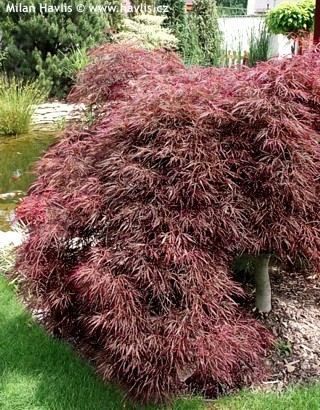Acer palmatum 'DISSECTUM NIGRUM' japanese maple
size/type
medium-sized shrub,medium-sized shrub
usual height
1,5-2m
usual width
1,5-2m
leaves
deciduous broadleaf
colour of leaves
flowers
insignificant or non-blooming
location
full to partial sun
soil type
acidic (peaty)
soil moisture requirements
evenly moist (dislikes drought)
USDA zone (lowest)
5 (down to -29°C)
winter protection
for zone 5+6

for zone 7

categorized
Acer
Japanese maples are very decorative and usually low shrubs, occasionally small trees, with attractive foliage and picturesque structure. There are many varieties in various shades of green, chartreuse, golden and yellow, red to maroon, and even multicoloured (variegated). They originate from Asia (Japan, China, Korea), where they have been cultivated for at least two centuries or perhaps even longer, however, they were introduced to Europe only at the beginning of the 19th century, specifically to Great Britain in 1820. Interestingly, the botanist Carl Peter Thunberg described them much earlier, in 1784, because he undertook an expedition to Japan in 1775-1776, discovering new species and collecting seeds and plants. He named the tree Acer palmatum, referring to the leaf shape resembling a human hand with fingers, although it is said that they first reminded him of frog fingers, which is also one of its oldest Japanese names: kaede. The other is momiji (baby hands). The beauty of the colours and shapes of the leaves and trees is reflected in many arts, for example, in the oldest preserved collection of Japanese poetry from the 8th century, the Man'yōshū (Collection of Ten Thousand Leaves). The Chinese poet Wang Wei (699-759) celebrated their beauty in many of his works, and naturally, maples often appeared in ancient paintings, tapestries, porcelain, and wherever classic and traditional decorations associated with the symbolism of these maples were desired: beauty and elegance, serenity, endurance, vitality, and transformation.Description of the plant:
Dissectum Nigrum is a laceleaf Japanese maple from the dissectum group. When describing it, it is commonly compared to similar varieties Garnet and Tamukeyama. It is a deciduous shrub or small tree with deeply incised, palmately divided, lace-like leaves whose segments are conspicuously more separated from each other than in Garnet, and the leaves are not as drooping as in Tamukeyama. In spring they emerge pale bronze with a silvery tinge and soon darken to an attractive and very dark shade of maroon, hence its name nigrum. In autumn they turn a brilliant shade of carmine red.It naturally grows slowly when it comes to height, and moderately in spread. If you are looking for a tall rather than wide plant, tie up the central leader to a support, a thicker bamboo stick will do. The side branches will always be arching making almost a mushroom-like head and picturesque veils of fine foliage.
Japanese maples need constantly moist soil that has to be well-drained, acidic to neutral, and medium fertile. Keep it mulched all year round. It loves a location with high air humidity, e.g. at a river bank or near a pond but it is not a must. Dissectum Nigrum maple makes the best foliage colour in full sun and constantly moist soil, and naturally grows in partial shade, too. Full shade is not recommended. It is hardy to at least -29 °C (USDA zone 5), and is suitable for outdoor planters, too, if kept moist but without a saucer.
Last update 15-05-2007; 07-03-2024
QUICK PRICE OVERVIEW
CURRENTLY SOLD OUT
WANT TO TRY A SIMILAR PLANT?












